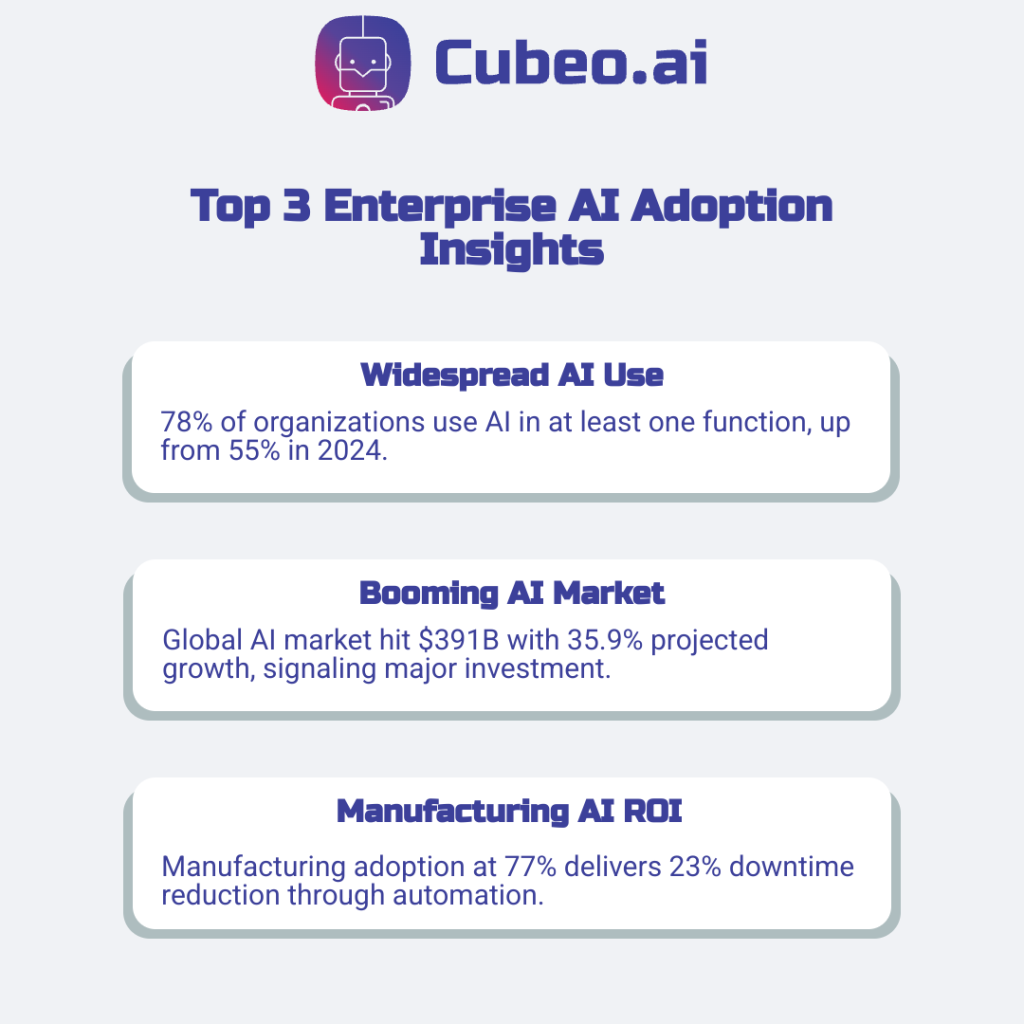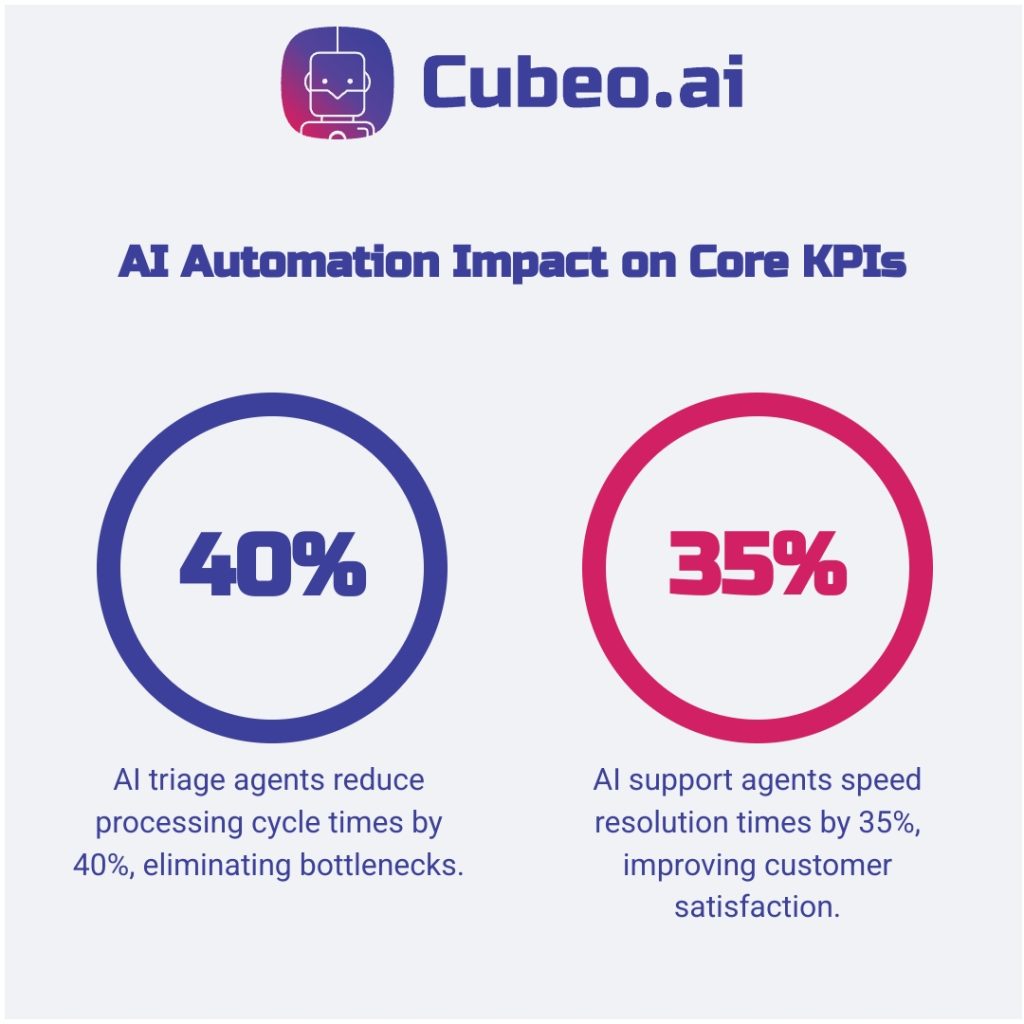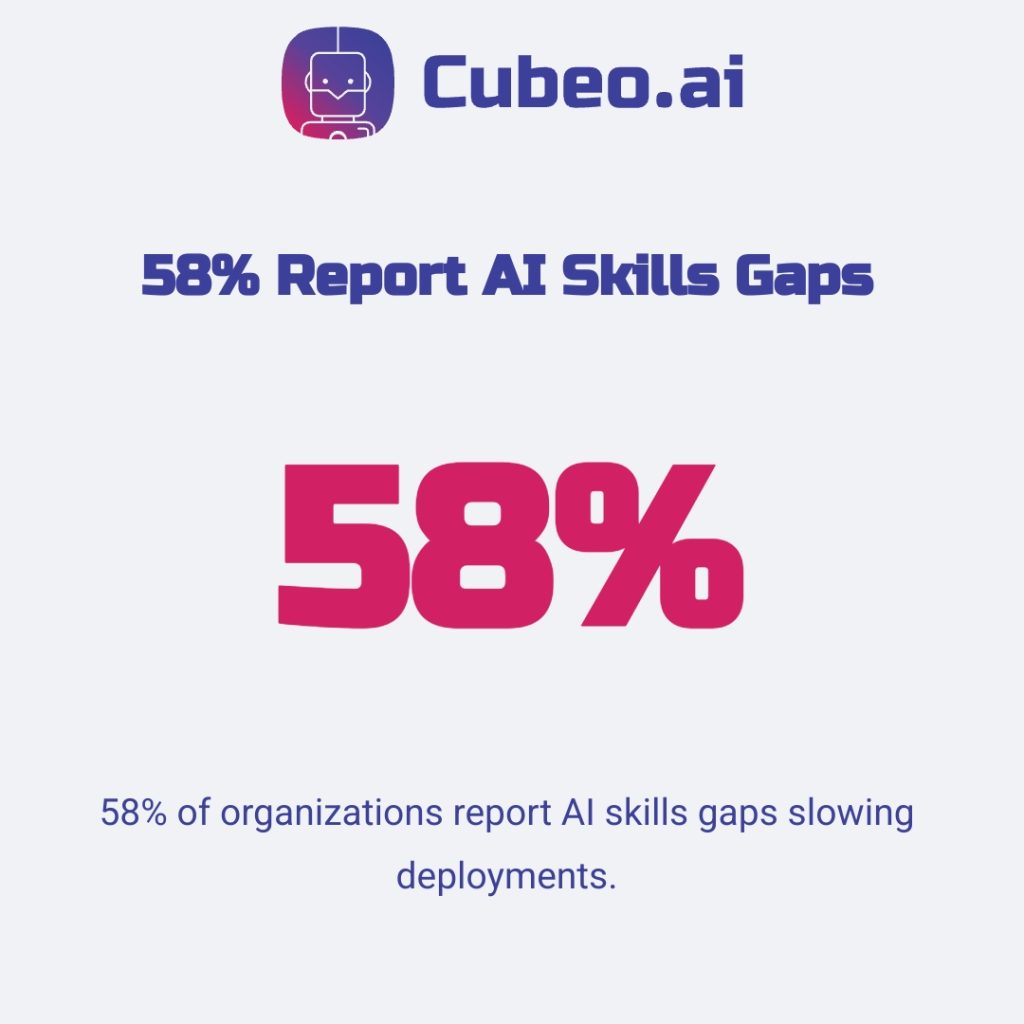Most AI statistics articles show impressive numbers without actionable deployment paths. Operations leaders need vetted data tied to measurable KPIs plus deployable workflows.
This guide delivers current, sourced statistics (2024–2025) mapped to operational KPIs— cycle time, cost per case, throughput, and SLA adherence. Each stat includes source/date, “what it means” for your KPIs, and “how to deploy” with a specific no-code agent pattern you can prototype in days.
What you’ll find:
- Prioritized adoption signals from McKinsey’s State of AI 2025 and PwC’s AI Predictions 2025
- KPI mapping for cycle time, throughput, and cost reductions
- Plug-and-play workflows using no-code agent patterns that require no programming
Enterprise AI Adoption and Investment Signals
Competitive pressure is driving AI beyond pilot phases. Operations leaders need timing signals and budget justification to launch production deployments.
Run a 90-day pilot focused on one measurable KPI. These adoption patterns show you when and where to start.
78% of organizations use AI in at least one function (Netguru, Sep 2025)
Market pressure has shifted AI from experimental to essential. This enterprise AI adoption rate jumped from 55% in 2024, signaling widespread commitment beyond testing phases.
What it means: Your competitors are already deploying AI in customer-facing processes. Delayed adoption means losing ground in response times, personalization, and service quality.
How to deploy: Build a ticket-triage agent — trigger: new ticket in support system; inputs: ticket text + customer history; action: auto-classify urgency + suggest response; output: priority tag + draft reply; KPI: reduce first-response time by 40%.
Global AI market reached $391 billion with 35.9% projected growth (Netguru, Sep 2025)
Investment patterns show sustained commitment beyond pilots. Meanwhile, Canadian businesses report 8.3% consider AI investment very important to operations, with 20.1% rating it somewhat important.
What it means: Budget allocation shows enterprises moving from proof-of-concept to production deployment. Finance teams are approving multi-year AI investments.
How to deploy: For large enterprises, pilot budgets around $25k are common for 90-day automation projects aiming to cut average handle time by 20%. For smaller teams, similar outcomes can often be achieved at a fraction of that cost using no-code platforms within existing digital transformation budgets.
Planned AI adoption highest in information services at 37.8% (StatsCan, Jun 2025)
Single-agent deployments are stepping stones to orchestrated systems. Government data shows professional services follow at 37.7%, indicating coordinated workflow automation planning.
What it means: Teams are designing agent ecosystems where specialized AI assistants handle different workflow stages — intake, enrichment, routing, and follow-up.
How to deploy: Build a lead-enrichment agent — trigger: new CRM contact; inputs: email + company domain; action: research company + add context; output: enriched contact record + next-action suggestion; KPI: increase qualified lead conversion by 25%.
Manufacturing AI adoption reached 77% with 23% downtime reduction (Netguru, Sep 2025)
Process-heavy industries see clearest ROI from automation. Manufacturing leads adoption while finance and insurance sectors report 30.6% usage rates in Canadian markets.
What it means: Industries with repetitive, measurable processes achieve faster ROI and clearer KPI improvements from AI deployment.
How to deploy: Build a quality-check agent — trigger: production batch completion; inputs: sensor data + quality specs; action: analyze compliance + flag issues; output: pass/fail report + corrective actions; KPI: reduce defect rate by 15%.

Process Automation Impact on Core Operations KPIs
Measuring AI automation success requires tracking specific operational metrics. Process automation delivers an average 240% ROI within 12 months, with payback periods of 6-9 months and $46,000 in annual savings per organization.
The key is building agent deployment workflows that target measurable KPIs. Here’s how 4 core metrics improve with AI automation and the specific agent patterns that drive results.
40% Average Cycle Time Reduction Through AI Triage (Engini, Aug 2025)
Automated triage eliminates manual routing delays that slow process completion.
What it means: AI triage automatically sorts and prioritizes incoming work, removing bottlenecks where requests wait for human review.
How to deploy: Build a request-triage agent — trigger: new case submission; inputs: request text + customer tier; action: classify priority + route; output: tagged case; KPI: cycle time reduction.
Cost Per Case Reductions in Claims Processing
Automation accuracy improvements reach 98% with 40% reduction in processing cycles, directly cutting labor cost per transaction handled.
What it means: Cost per case drops when AI handles document extraction, validation, and initial processing without human intervention.
How to deploy: Build a document-processing agent — trigger: claim upload; inputs: PDF files + policy database; action: extract data + validate; output: structured claim data; KPI: processing cost per claim.
Error Rates Fall Dramatically with Validation Agents
Business process automation reduces rework hours by 12% industry-wide (Vegam, Jul 2025) through automated validation that catches mistakes before they impact downstream processes.
What it means: Validation agents act as quality control layers, preventing human mistakes from reaching customers or creating costly corrections later.
How to deploy: Build a data-validation agent — trigger: form completion; inputs: entered data + validation rules; action: check errors + flag issues; output: validated record; KPI: error rate reduction.
Measurable CSAT Improvements with AI-Powered Support
Customer service automation delivers 35% faster resolution times (Engini, Aug 2025).
What it means: CSAT improves when AI provides faster, consistent responses while escalating complex issues to human agents appropriately.
How to deploy: Build a support-response agent — trigger: customer inquiry; inputs: message + customer history; action: provide answer or escalate; output: response + survey; KPI: CSAT scores.

Workforce Readiness and AI Governance
Scaling AI beyond pilots requires addressing skills gaps and governance frameworks. Production deployments need human oversight, compliance controls, and monitoring systems that balance automation benefits with risk management.
These 4 governance patterns help operations leaders deploy AI safely while building organizational readiness for sustained adoption.
58% of Organizations Report AI Skills Gap Challenges
Skills gap challenges threaten $5.5 trillion in economic losses, with enterprises facing critical shortages by 2026.
What it means: Technical skills shortage slows deployment and increases risk, directly impacting cycle time and cost per case when teams lack AI expertise.
How to deploy: Build a skills-tracking agent — trigger: new AI project assignment; inputs: employee profile + required skills; action: assess gaps + recommend training; output: skills report + learning path; KPI: time to AI competency.
Many Organizations Implement Human-in-the-Loop Oversight
Hybrid approaches maintain human decision authority for high-stakes processes. OECD analysis shows only 0.3-5.5% of training courses include AI content, highlighting oversight skill gaps.
What it means: Hybrid approaches balance automation benefits with human judgment, protecting SLA adherence and compliance for complex decisions.
How to deploy: Build an escalation agent — trigger: AI confidence below 70%; inputs: AI recommendation + case history; action: route to human reviewer; output: approved decision + audit log; KPI: escalation rate and review time.
Data Privacy and Security Compliance is Primary Concern
Regulatory frameworks like GDPR and emerging AI governance standards determine how AI systems access and process sensitive information in production environments.
What it means: Regulatory requirements shape deployment architecture and data handling, affecting throughput and operational risk when compliance controls slow processes.
How to deploy: Build a privacy-check agent — trigger: record with PII detected; inputs: data fields + privacy rules; action: redact sensitive data + tokenize; output: compliant record + audit trail; KPI: privacy violations per month.
Real-Time Monitoring Common in Production Deployments
Continuous monitoring tracks AI system performance, accuracy degradation, and user satisfaction to maintain production reliability and catch model drift before it impacts operations.
What it means: Continuous monitoring ensures performance and catches drift early, protecting SLA adherence and cost per case when models degrade over time.
How to deploy: Build a monitoring agent — trigger: hourly inference batch; inputs: predictions + ground truth samples; action: compute accuracy + latency metrics; output: dashboard alerts + drift warnings; KPI: time to detect performance drops.
With governance frameworks in place, you can safely scale AI pilots that deliver measurable KPI improvements.




